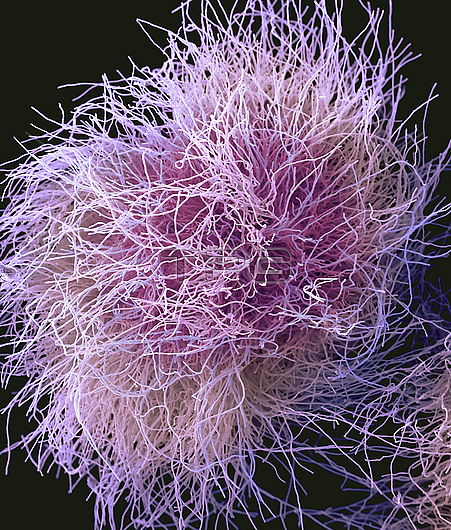
Coloured scanning electron micrograph (SEM) of a Trichophyton rubrum fungus. T. rubrum is an anthropophilic dermatophyte. Dermatophyte fungi infect keratinised tissues (skin, nails, hair) in humans and other animals. The downy strain of T. rubrum has become the most widely distributed dermatophyte of humans. It frequently causes chronic infections of skin, nails and rarely scalp. The granular strain is a frequent cause of tinea corporis in South East Asia and in Aborigines living in the Northern Territory of Australia. However, since the Vietman War, it has been spread throughout the world. The thread-like structures are hyphae, the vegetative filamentous cells of this fungus. This hyphal stage is the saprophytic stage of the fungus. Fungal growth is usually confined to tips of hyphae, where asexual reproduction occurs by spore formation. Dermatophytes preferentially inhabit the non-living, cornified layers of the skin, hair, and nail, which is attractive for its warm, moist environment conducive to fungal growth. Magnification: x40 when shortest axis printed at 25 millimetres.
| px | px | dpi | = | cm | x | cm | = | MB |
Details
Creative#:
TOP28015044
Source:
達志影像
Authorization Type:
RM
Release Information:
須由TPG 完整授權
Model Release:
N/A
Property Release:
N/A
Right to Privacy:
No
Same folder images:

 Loading
Loading